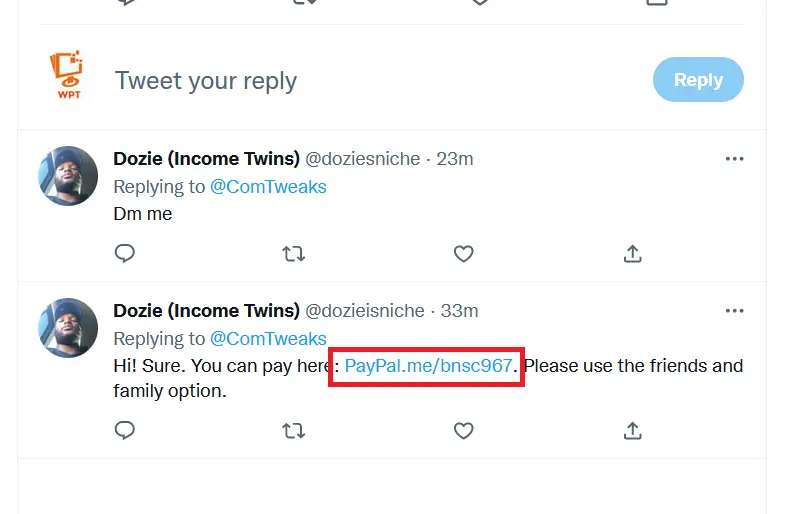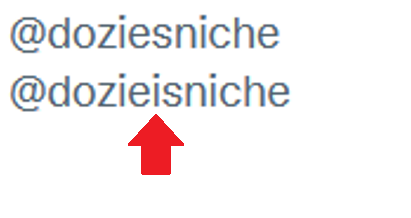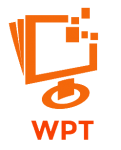Like most tech enthusiasts, I consider myself adept at spotting scams. But a few days back, I almost fell for a very dangerous Twitter scam, where a scammer impersonates someone and replies to you when you ask the original account a payment question.
Asking a Payment Question on Twitter – Got a Fake ID Response
Last week, I wanted to purchase a package from @doziesniche on his website, which didn’t offer PayPal as an option. So I sent him a message on Twitter:
Dozie asked me to message him privately on Twitter, but I also got another response:

As you can see, the second message includes a PayPal link and the helpful suggestion to “use the friends and family option”. It looks legit, right? There’s the same profile image, the same name, and…the same handle! So what’s the problem?
Wait – the Handle ISN’T the Same!
Upon closer inspection, however, the Twitter handles are different, with only a tiny change! Here’s an expanded screenshot:

There’s an extra “i” in the scammer’s handle that I didn’t notice, even though I checked the Twitter handle to see if it’s the same. Very sneaky! We’re so used to seeing “e” and “i” together in English words that our eyes sort of “gloss over” their combinations. I showed the tweets to a couple of friends, and even though both of them checked the handle, they didn’t spot the difference until I told them to look more closely!
The Twitter Scammer Blocks the Original Account
When I sent a DM to @doziesniche, he couldn’t see the fake account’s tweet because the scammer had blocked him. It’s a brilliant move to prevent the main account from suspecting that something’s off. Dozie had no idea that this scammer was shadowing tweets directed at him and hijacking payments-related messages.
So What Alerted Me?
Honestly? Nothing in particular. I even clicked on the PayPal link, and it loaded, asking me to enter the amount, but I didn’t take it any further. I’m not sure why. Maybe a natural hesitancy to send money to someone without further confirmation. Who knows?
I messaged Dozie and asked him about the link, and he responded with a request to send him a screenshot, which I did because of the fake account block. And then he asked him to look at the Twitter handle more closely, and only then did I spot the difference.
I’m Impressed by this Twitter Scam!
I find it pretty impressive, considering the creativity and effort the scammer put into shadowing all tweets relating to the original account. I’m not saying that I approve in any way, and of course, I reported the account as soon as possible, so it’s now blocked.
But if only the scammer took their talents and applied them differently, they could probably make far more money than this scam is likely to pay. After all, Twitter blocks scam accounts all the time, so it’s only a matter of time before you have to create a new one. And you’ll be running out of those pretty soon.
It’s a real-life example that crime doesn’t pay!
How to Avoid Scams like this in the Future
A good rule of thumb, I suppose, is to always contact the original owner of an account before making any payment. Don’t just click a payment link on the Internet without further information. Of course, I should have known better and am duly eating my humble pie.
Another lesson is to carefully check the handle of every person when there’s a monetary transaction involved. The mixing of the “e” and “i” tripped me up, but if I had looked closely, I would have spotted it.
Finally, report those scam Twitter accounts whenever you can since it does help.
Stay safe.

Speak Your Mind